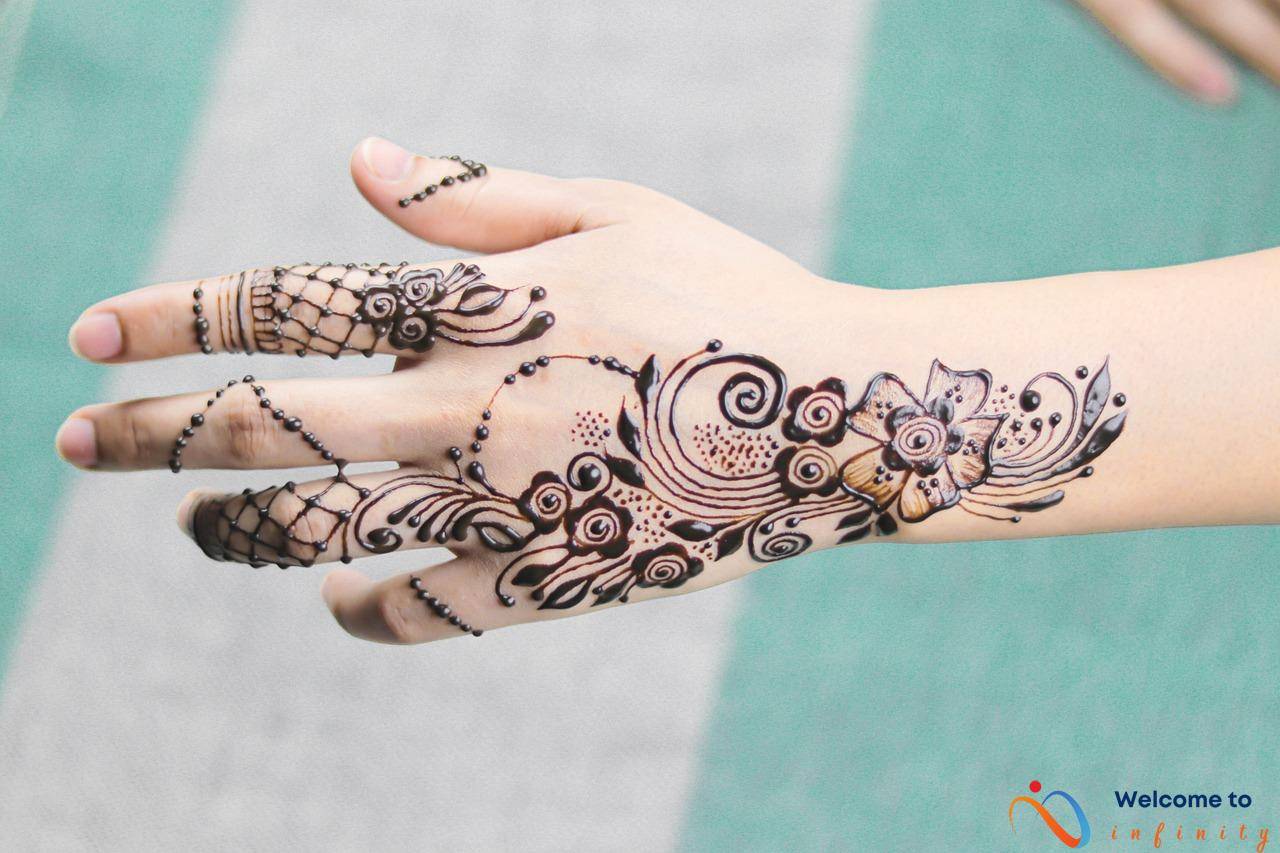Tattoos have become a mainstream form of self-expression, but they require upkeep to maintain their vibrancy as they age. As time passes, tattoos can lose their sharpness and clarity, and their colors can become less vibrant if they are not cared for properly. In this article, we will explore ways to preserve tattoos as they age, including tips on how to care for them and get them retouched.
To understand how to care for aging tattoos, it is crucial to be aware of why tattoos lose their color over time. The ink used for tattoos settles under the top layer of skin and stays there. However, as our skin changes and becomes less elastic and thinner over time, this can cause tattoos to fade. It is essential to take steps to maintain tattoos' integrity so that they continue to look good over time.
Preserving tattoos begins at the beginning of the process and continues throughout their lives. Certain things need to be done to ensure that the tattoo remains intact and vibrant over time, while other things need to be avoided. One of the major things that should be avoided is direct sunlight because sunlight can cause tattoos to fade faster. Minimize sun exposure to keep the integrity of the tattoo, and invest in a good sunscreen that protects both the tattoo and your skin from sun damage. Scratching or picking the tattoo can cause the ink to become distorted and less bright, leading to a less vibrant tattoo.
Soaking a tattoo in water can also cause fading and distortion. Avoid submerging the tattoo in water, including in pool water, for the first 14 days. After that time, ensure the tattoo is sufficiently moisturized using a lotion that has been approved by the tattoo artist.
No matter how carefully a tattoo is cared for, it will eventually fade over time. The good news is that touch-ups can bring back the vibrancy and make the lines crisp again. The ideal timeline for tattoo touch-ups varies depending on the individual's skin, the tattoo's location, and aftercare practices. Generally, it is safe to get a tattoo retouched when it's fully healed, which is typically between four to six weeks after getting the tattoo. During the process of touch up, the artist goes over the original design and adds ink to any faded areas.
The aftercare process for retouching a tattoo is similar to the initial process and usually involves keeping the tattoo clean and moisturized. Proper care for tattoos is critical in prolonging their vibrancy, and touch-ups can be done to keep aging tattoos looking new.
Why tattoos lose their color over time
Tattoos are a beautiful and permanent way to express oneself, but over time they can lose their vibrancy and clarity, causing them to look faded. This is due to changes in our skin as we age. The ink used in tattoos is injected under the top layer of skin, called the epidermis, and stays there. However, our skin changes as we grow older, becoming less elastic and thinner. This causes tattoos to fade because the ink spreads out and becomes less concentrated. Additionally, exposure to sunlight can speed up the process of fading.
The fading process can also depend on the color of the ink used. Some colors fade faster than others, with blues and greens generally being the most susceptible to fading. black ink is typically the most resilient, but it can also fade over time.
To help prevent fading, it's important to take good care of your tattoo. This means avoiding prolonged exposure to sunlight, keeping your skin moisturized, and using a high-quality sunscreen when you are outside. By taking good care of your tattoo, you can help maintain its vibrancy and prevent it from looking faded or washed out over time.
Preserving tattoos: Do's and Don'ts
Preserving tattoos is not a one-time deal. It starts at the beginning of the process and continues throughout the life of the tattoo. Here are some things you can do to ensure that your tattoo maintains its integrity and vibrancy over time.
- Do: Stay out of direct sunlight. Excess sun exposure causes tattoos to fade faster, so minimize sun exposure to help keep the integrity of the tattoo.
- Do: Invest in a good sunscreen. It is important to choose a sunscreen that will protect the tattoo as well as your skin from sun damage.
- Do: Keep your tattoo moisturized. Moisturizing is important to keep your skin from forming hard, dry scabs that can pull the ink out of the tattoo. You can use any mild, unscented lotion or cream to keep your skin hydrated. Repeat this process multiple times a day.
- Don't: Pick or scratch your tattoo. Picking or scratching a tattoo can cause the ink to become distorted and could result in less vibrant colors. It can also slow down the healing process. Your tattoo artist will provide aftercare instructions, including how to avoid scratching the tattoo.
- Don't: Soak your tattoo in water. Soaking a tattoo in water can cause fading and distortion. Avoid submerging your tattoo, including in pool water, for the first 14 days.
- Don't: Wear tight clothing over your tattoo for the first few days. Wearing tight clothing can rub against your fresh tattoo and cause irritation. Try to wear comfortable, loose-fitting clothes until your tattoo heals completely.
Being careful in the early days, avoiding direct exposure to sunlight, and keeping your skin hydrated may all contribute significantly to preserving the quality of your tattoo in the years to come.
Do: Stay out of direct sunlight
As mentioned earlier, exposure to sunlight can cause tattoos to fade faster. Sunlight causes tattoo ink to break down by breaking down the skin cells where the tattoo ink resides. This can cause the colors to fade and the lines to blur, damaging the tattoo permanently. To avoid this, it is advisable to stay out of direct sunlight. If you do need to be outside for an extended period, wear protective clothing that covers the tattooed area, or use a high-quality sunscreen on the tattoo to shield it from the harmful UV rays.
For best results, get a sunscreen that is catered specifically for tattoos. These sunscreens are specially designed to protect your tattoo and your skin. Avoid sunscreens containing zinc oxide or titanium dioxide, as these substances can create a barrier between the sun and your skin and cause your tattoo to come off.
- Choose a sunscreen with an SPF of at least 30
- Apply sunscreen at least 20 minutes before going out in the sun
- Reapply sunscreen every two hours or more frequently if needed
- Make sure to apply sunscreen evenly
Proper care of your tattoo can make a significant difference in how it looks over time. Staying out of direct sunlight and using a high-quality sunscreen are two of the primary ways to help your tattoo maintain its vibrancy and integrity. Remember, your tattoo is an investment, and taking good care of it will ensure that it looks great for years to come.
Do: Invest in a good sunscreen
Choosing the right sunscreen is key to protecting your tattoo from sun damage. Look for a sunscreen with an SPF of at least 30 and make sure it is broad-spectrum to protect against both UVA and UVB rays.
You will also want to choose a sunscreen that is fragrance-free and gentle on your skin. Avoid using sunscreens that contain alcohol or harsh chemicals that can damage your tattoo.
When applying sunscreen to your tattoo, be sure to cover the whole area thoroughly and evenly. Apply sunscreen at least 30 minutes before going outside and reapply every 2 hours or after swimming or sweating. Sunscreen is especially important when your tattoo is in the healing process, as the skin is more sensitive and vulnerable to sun damage.
In addition to sunscreen, consider wearing clothing that covers your tattoo when in direct sunlight. This can help protect your tattoo from fading and damage. If you plan to spend a lot of time outdoors, consider investing in sun protective clothing that is specifically designed to block harmful UV rays from reaching your skin.
Don't: Pick or scratch your tattoo
One of the worst things you can do to your tattoo is pick or scratch at it. Doing so can cause the ink to become distorted and could result in less vibrant colors. It can also lead to scarring and damage to the skin. If you find yourself itching your tattoo, apply a mild moisturizer or lotion to alleviate the itch. If the itching persists, speak to your tattoo artist or a dermatologist for further advice.
In addition to avoiding picking and scratching, it is important to avoid any rough contact with the tattooed area. Don't wear tight clothing that could rub against the ink and never pull or peel at any scabs that form as the tattoo heals. Doing so could cause the ink to come out and result in a less attractive tattoo.
Overall, remember that your tattoo is an investment and should be treated as such. Taking good care of your tattoo, even after it has fully healed, will ensure that it remains vibrant and beautiful for many years to come.
Don't: Soak your tattoo in water
One of the most important things to remember when caring for a new tattoo is to avoid soaking it in water. Water can cause the ink to become distorted and can lead to fading or loss of vibrancy. This includes avoiding submerging the tattoo in pool water, hot tubs, and baths for at least the first 14 days after getting the tattoo.
If you need to clean the tattoo, use a damp cloth or paper towel instead and avoid rubbing or scratching the area. It's also important to avoid using soap for at least the first 24 hours after getting the tattoo, as this can also cause damage to the ink.
After the initial healing period, it's still important to be cautious when exposing your tattoo to water. When showering or bathing, avoid using hot water or soaking your tattoo for prolonged periods of time. Instead, keep the area clean and dry by gently patting it dry with a clean towel.
If you do need to be in the water for an extended period of time, be sure to cover your tattoo with a waterproof bandage or wrap to protect it from damage. Additionally, it's important to avoid sun exposure and use sunscreen to protect the tattoo from further fading or damage.
By following these guidelines and being cautious with your tattoo, you can ensure that it remains vibrant and beautiful for years to come.
Retouching Your Aging Tattoo
No matter how well you care for your tattoo, the ink will eventually fade over time. However, getting a tattoo touched up can help restore the vibrancy and clarity of the design. The touch-up process involves going over the original design and adding ink to any faded areas as needed, which can bring back the sharpness of the lines and colors.
The timeline for getting a tattoo retouched varies depending on the individual's skin type, the location of the tattoo, and aftercare practices. As a general rule of thumb, a tattoo needs to be fully healed before it can be retouched, which typically takes 4-6 weeks. After that, it's best to wait until the ink has noticeably faded before scheduling a touch-up.
The tattoo retouching process is usually done in a single session and can take only a few hours, depending on the size of the design. It's important to choose an experienced and reputable tattoo artist for the touch-up process to ensure that the result is high-quality. During the touch-up, the artist will go over the original design with fresh ink, correcting any faded or blurry areas.
Aftercare for a tattoo touch-up
After getting a touch-up, it's important to follow proper aftercare practices to ensure that the tattoo heals well and remains vibrant. These practices typically involve keeping the tattoo clean and moisturized, avoiding exposure to direct sunlight, and avoiding soaking the tattoo in water for at least 14 days. Your tattoo artist will provide you with aftercare instructions specific to your touch-up, and following them is the best way to ensure that your tattoo stays vibrant and sharp for years to come.
The timeline for tattoo touch-ups
The timeline for tattoo touch-ups can vary depending on various factors such as the tattoo's location, size, and intricacies, as well as the aftercare practices of the individual. As a general rule of thumb, a tattoo needs time to heal before it can be retouched to ensure that the ink settles properly and the lines do not blur.
Typically, it takes about 4-6 weeks for a tattoo to fully heal. This timeline can vary, however, based on the individual's skin type and how well they care for the tattoo during the healing process. It is important to follow proper aftercare instructions given by the tattoo artist, such as keeping the tattoo clean and moisturized and avoiding tight clothing that may rub against the tattoo.
Once the tattoo is fully healed, the retouching process can begin. It is important to note that some tattoos may require multiple touch-up sessions to achieve the desired results, and the frequency of touch-ups will depend on how well the tattoo is cared for and how much it is exposed to the sun.
Overall, the timeline for tattoo touch-ups may vary, but it is important to be patient and allow the tattoo to fully heal before seeking to retouch it.
The tattoo retouching process
When getting a tattoo retouched, the artist will typically go over the original design, adding ink to any faded areas as needed. They may also make any necessary adjustments to the design, such as cleaning up lines or adjusting shading.
It is important to find a skilled tattoo artist who is experienced in touch-ups to ensure a successful result.
The process of tattoo retouching typically takes place in a single session, and the length of time it takes will vary based on the size and complexity of the tattoo. It is important to communicate with the artist about your expectations and preferences before the session begins.
- Find a skilled tattoo artist experienced in touch-ups
- Communicate your expectations and preferences before the session begins
- The process typically takes place in a single session
- The length of time it takes will vary based on the size and complexity of the tattoo
After the touch-up session is complete, it is important to follow proper aftercare procedures to ensure the best possible result. This includes keeping the tattoo clean and moisturized, avoiding excessive sun exposure, and following any other specific instructions provided by the artist.
Overall, tattoo retouching is an effective way to bring back the vibrancy of an aging tattoo, but it is important to find a skilled artist and follow proper aftercare procedures to ensure the best possible result.
Aftercare for a tattoo touch-up
After getting a tattoo retouch, it is vital to take care of it properly to ensure that it heals correctly and quickly. The aftercare process for a tattoo touch-up is similar to the initial aftercare process. Here are some tips to help you care for your tattoo after getting a touch-up:
- Keep your tattoo clean and avoid touching it unnecessarily for the first few days.
- Wash the tattoo gently with mild soap and warm water twice a day.
- Pat the tattoo dry with a clean towel and avoid using a cloth or anything rough that might damage the tattoo.
- Avoid soaking the tattoo in water for at least two weeks after the touch-up.
- Avoid exposing the tattoo to direct sunlight or tanning beds until it is fully healed and avoid using any kind of ointment or lotion that will cause the healing process to slow down.
- Use a fragrance-free, hypoallergenic moisturizer to keep your skin hydrated and to help the tattoo heal more quickly.
- Avoid wearing tight clothes that may rub against the tattoo and consider wearing loose, breathable clothing.
Following these tips will help ensure that your tattoo stays vibrant and healthy. Proper aftercare is critical to the healing process, so be sure to take care of your tattoo properly to avoid any complications.
In Conclusion
In conclusion, proper care for tattoos is crucial to keep them looking vibrant, sharp, and clear as they age. Following the do's and don'ts of tattoo preservation, such as avoiding direct sunlight and investing in a good sunscreen, will help maintain a tattoo's integrity. However, even with the most careful maintenance, tattoos will still fade over time. That's where tattoo touch-ups come in, allowing you to bring back the vibrancy and crispness of aging tattoos. The process of tattoo retouching is relatively simple and involves going over the original design and adding ink to any faded areas as needed. The aftercare process for tattoo touch-ups is similar to initial aftercare, which consists of keeping the tattoo clean and moisturized. In summary, proper care and regular touch-ups can help keep aging tattoos looking new and clear for years to come.









